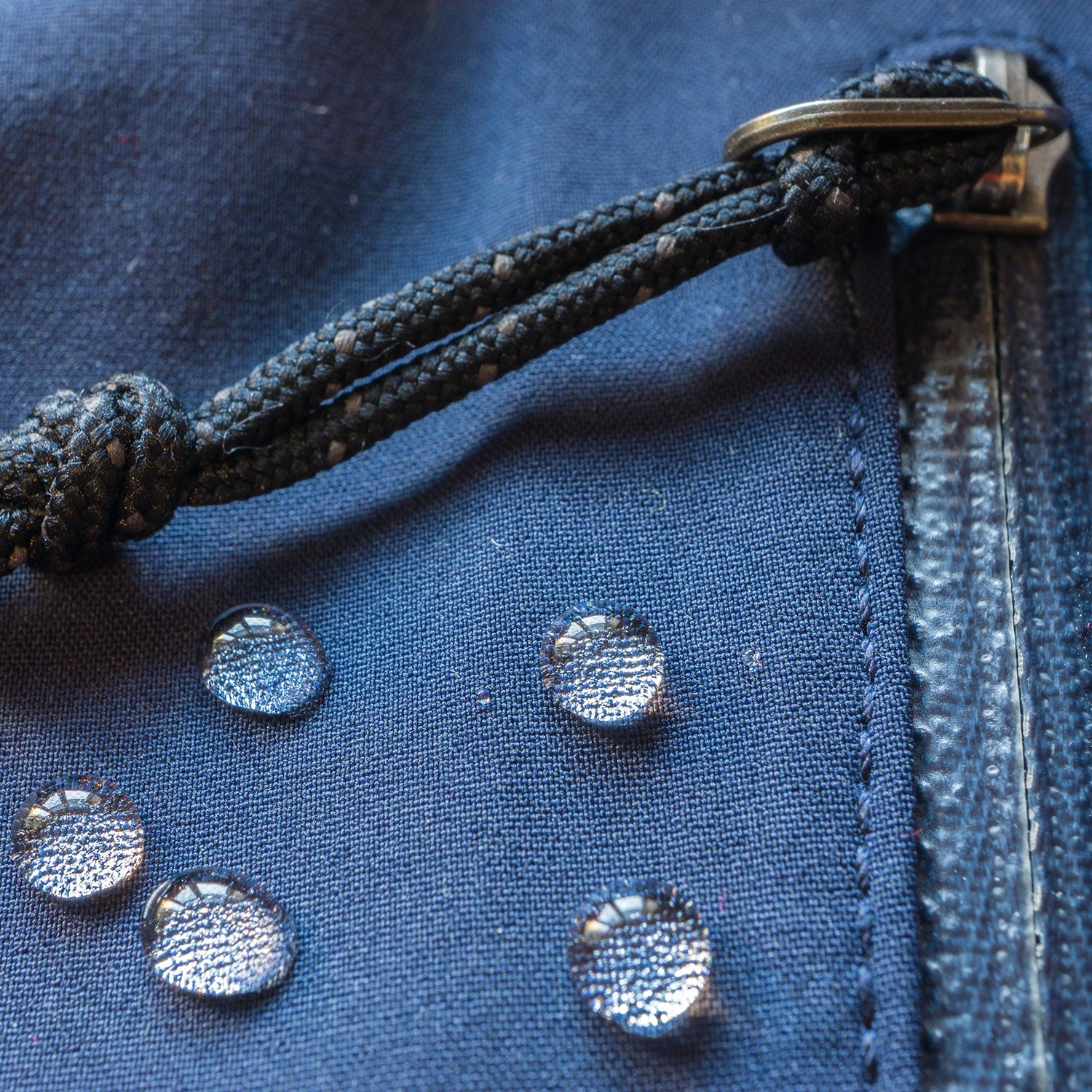Gear companies apply durable water-repellant finish, or DWR, to all kinds of things these days: jackets, of course, but also sleeping bags, pants, even hats. It’s what makes water bead up and roll off. Because many traditional rain shells have face fabrics, DWR is essential in making sure it doesn’t get waterlogged and stifle the breathability of the waterproof membrane beneath it. When the DWR layer isn’t working, the outer fabric absorbs the water (called “wetting out”), adding weight and losing that key breathability.
The good news: Because DWR is just a coating, it’s easy to revitalize. Here’s how to get the most life out of it and apply a new finish.
#1. Wash It First (And Often)
“Most of the time, when someone says, ‘My jacket’s not waterproof anymore,’ it just needs to be washed,” says Lindsey Stone, marketing manager at , one of the country’s biggest outdoor-gear repair businesses. Dirt, body oil, sunscreen, and especially campfire smoke degrade DWR, allowing water to penetrate the fabric. Washing off the contaminants can bring it back. “A lot of people think cleaning a jacket strips away the DWR,” adds Heidi Allen, vice president of marketing for . “That’s not true. More washing is better.” That doesn’t mean wash it every time you use it. Instead, treat it like a good pair of jeans and wash your jacket when it starts to smell or gets dirty. Stone recommends washing your jackets at least once every season and after big trips, and more often for aerobic jackets if you’re sweating a lot in them.
#2. Use a Technical Fabric Wash
Household detergents can leave a residue behind that can act like oils and dirt, attracting water. Instead, and both have biodegradable soaps, which are gentler on fabrics and the environment than detergents.
#3. Test the DWR
Dry the jacket according to the care label, and then test the DWR by sprinkling or spraying water on the shoulders, waist, and back. If the water beads up and rolls away, your jacket’s good for another round. If any water absorbs into the jacket or the color of the fabric changes, the DWR needs reapplying. You can also tell by wearing your clean jacket in the rain. If the rain doesn’t bead or the fabric starts to look soggy, it’s time to reapply.
#4. Pick Your Application Method
DWRs come in aerosol and liquid sprays or a wash-in treatment. Aerosols tend to use chemicals that are hard on the environment, so we don’t recommend them. The wash-in works like laundry soap, soaking the garment in the DWR treatment. It’s best for shell-style jackets. “It eliminates user error,” says Allen. “You won’t miss a spot, and wash-ins don’t impact breathability.” The liquid spray is applied with a squirt bottle just to the exterior of the jacket. It works best for insulated and multiple-layer jackets and sleeping bags, where the insulation would absorb a lot of the wash-in.
Spray Application
After washing (drying is optional), hang up the jacket and spray all over, including the hood and under the arms. Give a few extra shots to the shoulders, chest, and waist, where the most abrasion occurs and DWR is most likely to wear off quicker. Wipe off any extra liquid.
Wash-In Application
Read the DWR label to see how much to add for the number of garments and for your type of washing machine. Most bottles can reapply two or three jackets at a time. Add the DWR and the clothing to a washing machine cycle according to the directions, typically a warm-water wash and slow spin.
#5. Read the Label Before Drying
Some types of waterproof-breathable membranes should never go into the dryer, while some DWRs revitalize best with heat—read the label for drying instructions. If the garment can go in the dryer, Stone recommends the lowest heat setting for only 15 to 20 minutes.


